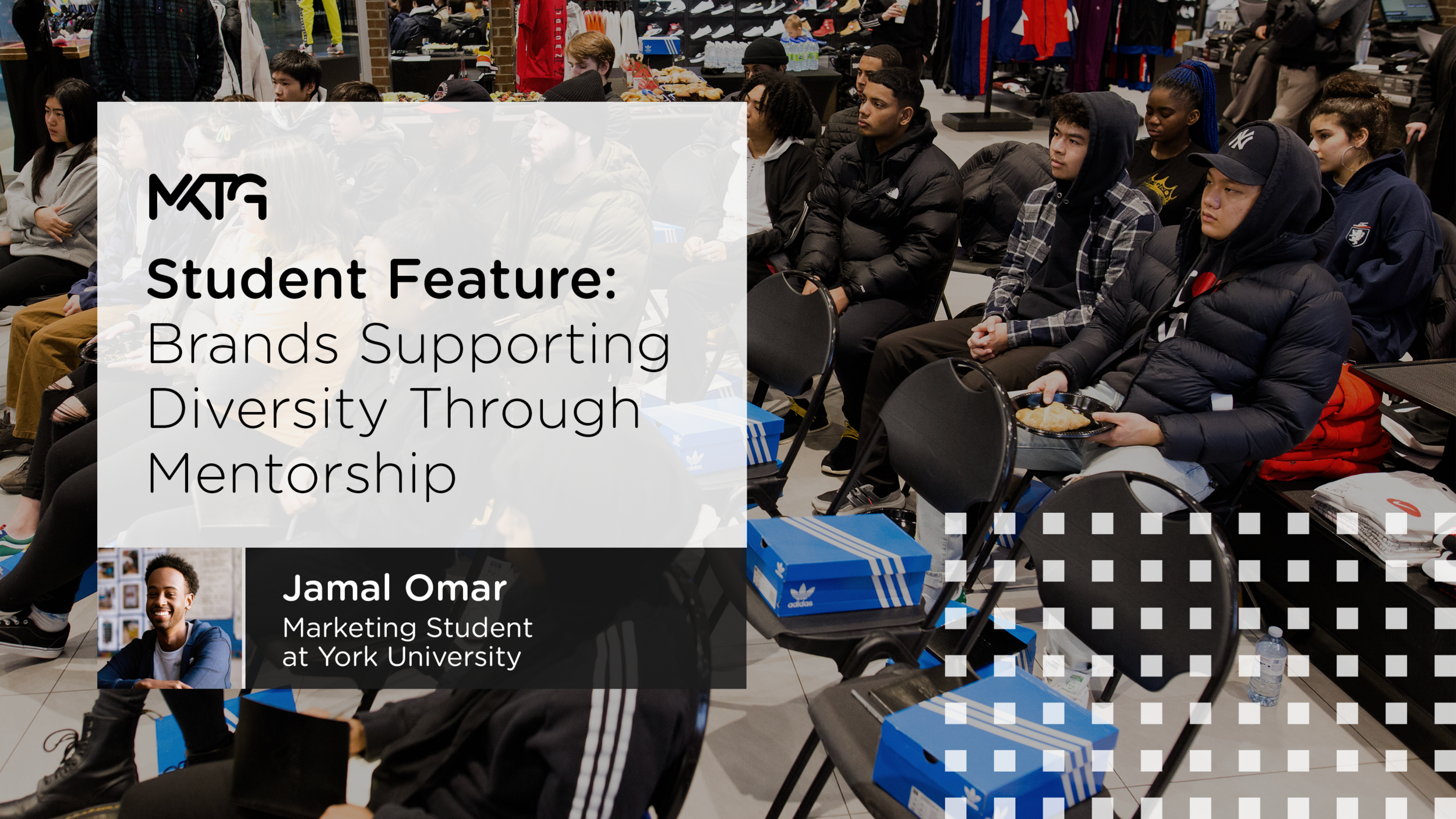A History Lesson for Brands: The Cultural Intersectionality of NBA Players & Fashion
Now is an interesting time for our industry. There are tons of students starting their sports marketing and sponsorship careers who are trying to navigate what’s next. So we at MKTG Canada wanted to profile some of the best and brightest up and coming students in the sport and event industry and turn the pen on our company blog over to them. In the coming weeks, we will publish thinking from students breaking into the industry. We have enjoyed the experience chatting with them, sparring over ideas, and giving them builds on their work. We are proud to profile their words and talents and we hope you enjoy reading them. Know a student who wants to be profiled in these pages? Are you a student yourself? Get in touch with us @mktg_canada on Instagram.
_5qi86dxk3pwt5osuqgiznk.jpg)
About the Author
Kai is a culture enthusiast with passions for sports, food, music and showing off his sneaker and streetwear style. When he is not cheering on the Raptors and Leafs, you can find him exploring Toronto’s downtown core in search for latest trends, tastes and styles the city has to offer. Fresh out of his post grad at George Brown College, Kai is kickstarting his professional career in the sports and event marketing world.
5 MINUTE
READ
Early NBA fashion is reflective of Black hip-hop culture, which was challenged by league-enforced dress codes
NBA players are at the forefront of fashion today, influencing culture and advocating for equality and justice through fashion
Social media has helped propel NBA fashion culture into the mainstream
Brands can authentically show their support for social justice initiatives and forward their brand’s position and image by merging sport and fashion industries to drive cultural change
Equality.
I Can’t Breathe.
Say Their Names.
Black Lives Matter.
These were some of the messages conveyed on NBA players’ jerseys the NBA restart in the Orlando bubble. This takes the following quote to a new meaning:
"Wear your Jersey with pride, and know you are playing for something bigger than yourself" - Dr. Julie Amato
The identity of the National Basketball Association is widely known as a player’s league - its efforts are always for the players. With the recent public emergence of racial injustice, the NBA is fully behind its players on the court to ensure they feel supported during this time. Yet another case of racial injustice in the US sparked the brief but impactful league wide strike. In addition to the efforts they have made in the NBA bubble regarding social justice messaging, the NBA has further relaxed its dress code in hopes to enhance the spread of its message for social change throughout the United States and globally.
This goes beyond sports and the game of basketball. Athletes in today’s game are not only seen for their athletic ability as their personal brands are extremely valuable. There is a large number of athlete brand deals in today’s game with ten of the NBA’s top players earning a combined $247 million in endorsement deals. Fashion brands do an excellent job in finding alignment between athletes and their personal brands in a mutually beneficial partnership.
Knowing the power of fashion influence in today’s sports atmosphere and the influence athletes have on marketing, brands can authentically show their support for social justice initiatives and forward their brand’s position and image by merging sport and fashion industries to create and drive cultural change.
Where It All Started
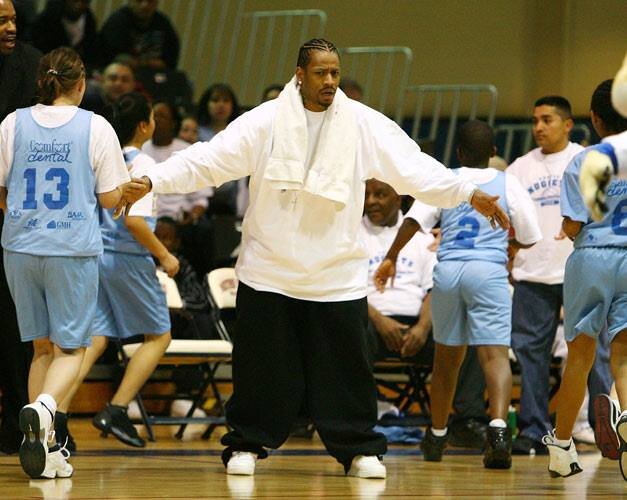
Fast forward past Dennis Rodman and the amazing 90’s fashion, the early 2000’s produced some of the most iconic trends that paved the way for the way we see NBA fashion today. Players like Allen Iverson, the late Kobe Bryant and Shaquille O’Neal revolutionized fashion with their baggy pants inspired by Black hip-hop of the decade.
The notable 2005 dress code was enforced in an effort to re-establish the professionalism of the league after the infamous Malice of the Palace between the 2004 Detroit Pistons and Indiana Pacers. Former NBA commissioner David Stern’s dress code terms code highlighted these key points:
1) All players must dress in business or conservative attire
2) The attire must be worn when arriving and departing from games, on the bench if injured, and while conducting any official NBA business
The dress code was designed to deter clothing and apparel associated with the 2000’s hip hop culture including baggy clothing, jeans, hats, t-shirts, large jewelry and sneakers. Creating a more formal attire for players was seen to give the league a more professional image. But that’s not the way players felt about it. NBA fashion pioneers were very critical of the new dress code, calling it a racist attempt to minimize Black culture in the NBA community. The 2005 dress code restricted the personal identity of players and after a large amount of player backlash, the dress code was relaxed, allowing players to dress more freely to the emerging fashion trends.
The effects of the infamous dress code created an innovative new platform for the NBA, its athletes and fashion brands to market clothing and enhance the sports fashion landscape in the process. The emergence of fashion brand deals and athlete signature clothing lines have since changed fashion forever. NBA players are at the forefront of fashion and the dress code may have been seen as racist initially, but in today’s landscape personal style has progressed so much so that players and brands use their platforms convey social messages through their style.
The New Tunnel Walk
Fashion has now become an integral part of the NBA that fans and consumers look forward to before tipoff. The evolution of the tunnel walk has changed the way fashion brands market their products. Brands can show off their products during nightly “fashion shows” where their athlete models strut down this modern runway. Anticipation from fans and media during pregame makes the tunnel walk a must watch part before the NBA games tip off, shared on Instagram pages like League Fits, who highlight athlete creativity and create a buzz for athlete fashion. From naming PJ Tucker as the Sneaker King to announcing the All Drip Team, social media accounts like this play a role in the exposing brands and player messages to the modern digital audience and creating buzz around what players are wearing.
On Court Expression
Within the NBA and WNBA Bubbles we have seen players in the tunnel wearing clothing in response to the racial injustice such as graphic t-shirts of influential figures in Black history as well as t- shirts commemorating recent Black victims of violence and social injustice. In addition to a health and safety precaution, displaying messaging on masks has become the norm as well, reflecting both fashion and function. Conveying a message on court isn’t new though: we’ve seen messages on t-shirts such as when the Lakers wore “I Can’t Breathe” t-shirts to advocate for justice for Eric Garner in 2014 following his death at the hands of a police officer, to commemorative phrases to honour the life of someone who’s passed on their sneakers, such as when Isaiah Thomas wrote a message on his game kicks for his sister who passed away. The court has always been a place of expression.
Social Justice Messaging
The NBA has given the option to allow players to wear social justice messaging on their jerseys. As the official sponsor of NBA clothing, Nike is also on board with this move. As one of the forefront brands for social change, Nike is doing an excellent job at supporting its athletes by also providing t-shirts that have the phrase “Black Lives Matter” on them. This push is not the first time Nike’s demonstrates its efforts towards racial equality. Previously Nike supported
Colin Kaepernick of the National Football League in the widely respected campaign “Do something even if it means sacrificing everything”. As part of their new campaign “Just Do It For Once”, there is a new spark of interest from fans on where they can get their hands on these NBA jerseys and t-shirts to show their support. NBA players understand the role they play in influencing and shaping fashion and broader cultural trends. They can leverage this awareness to promote causes they care about, while using fashion as a vehicle for self-expression.
What can Brands do Now?
Many brands want to get involved with the Black Lives Matter Movement, but it’s important to recognize that this is not a trend – it is a serious issue that needs change. Anti-Black systemic racism affects real people, and real lives.
We’ve seen that athletes can sell products as proven in the past, however using their creative lens through fashion can create a genuine/authentic influencer marketing tactic for brands to leverage, and brands who continue to authentically leverage athlete ambassadors through creative lenses will likely continue to garner culturally relevant success. Using fashion to merge the personal brands of athletes with social messaging is a great way to communicate a meaningful message as it’s a medium that is generally well received by NBA fan audiences. What’s arguably most important is ensuring that any efforts align with the values of the brand, and the athlete. We see that the league over the years first tried to deter Black fashion from being at the forefront, but Black fashion has a large influence on consumer trends and culture.
For the upcoming NBA seasons, I hope that we will continue to see more brands taking a firm position on racial injustice and police violence. Attaining more purposeful reach at both small and large scales with people who share the same values not only extends into different markets, but also shows genuine support for the cause which will hopefully lead to a more equal, and equitable society, both here in Canada and in the US.



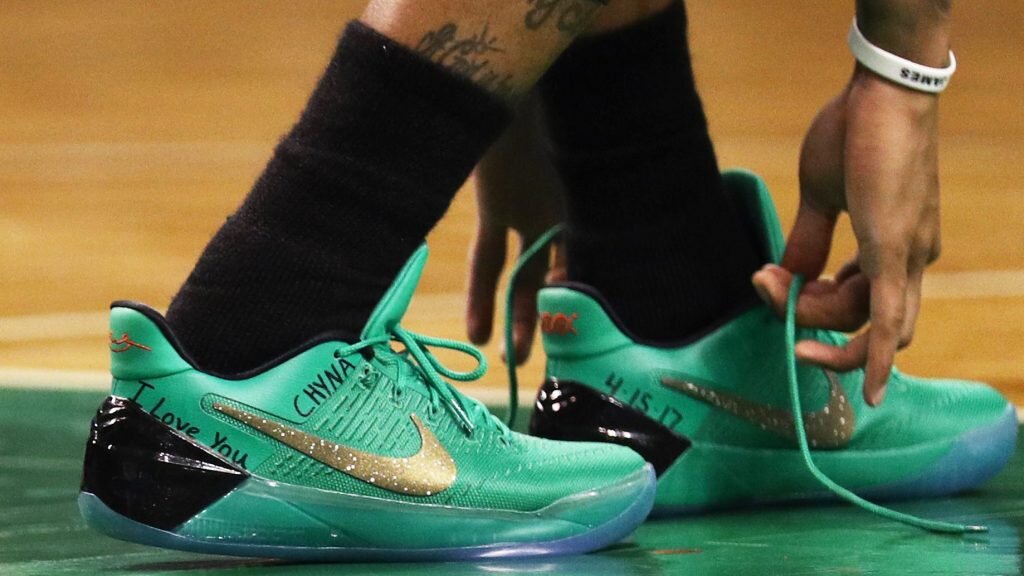
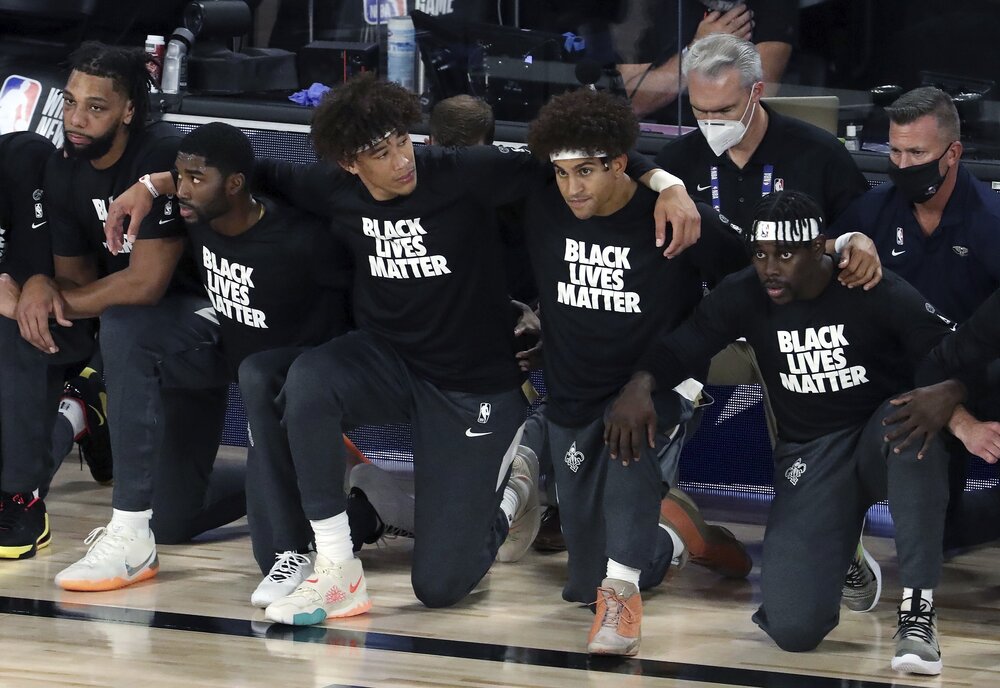
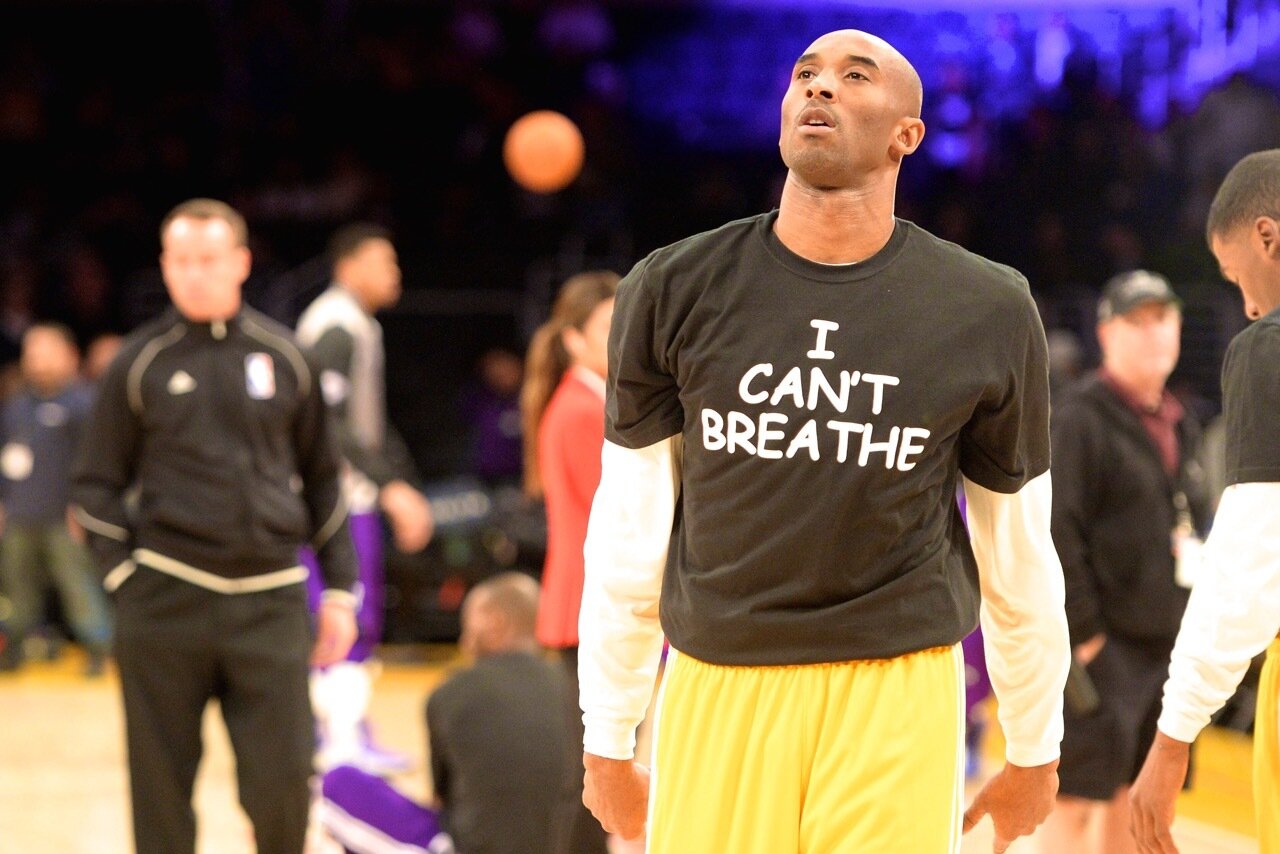
_g4nu60ki5aw4z35cf3wj5u.png)
